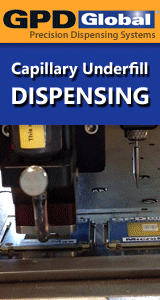Printed Circuit Board Assembly & PCB Design Forum
SMT electronics assembly manufacturing forum.
- SMTnet
- »
- Electronics Forum
- »
- Micro Vias in Pads
Micro Vias in Pads
![]()
![]() Anyone have an idea how small a via must be to inhibit sig...
- Mar 24, 1998
by
Anyone have an idea how small a via must be to inhibit sig...
- Mar 24, 1998
by
![]()
![]() | Anyone have an idea how small a via must be to inhibit s...
- Mar 24, 1998
by
| Anyone have an idea how small a via must be to inhibit s...
- Mar 24, 1998
by
![]()
![]() We have successfully put .016" vias in .030" pad...
- Mar 25, 1998
by
We have successfully put .016" vias in .030" pad...
- Mar 25, 1998
by
![]()
![]() We have successfully put .016" vias in .030" pad...
- Mar 25, 1998
by
We have successfully put .016" vias in .030" pad...
- Mar 25, 1998
by
![]()
![]() | We have successfully put .016" vias in .030" p...
- Mar 25, 1998
by
| We have successfully put .016" vias in .030" p...
- Mar 25, 1998
by
![]()
![]() | We have successfully put .016" vias in .030" p...
- Mar 30, 1998
by
| We have successfully put .016" vias in .030" p...
- Mar 30, 1998
by
- SMTnet
- »
- Electronics Forum
- »
- Micro Vias in Pads







